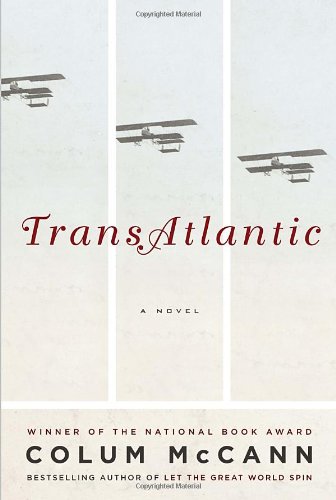Transatlantic
TransAtlantic is a sweeping tour-de-force of words, wit, and historical wonderment. The first half is comprised of three novellas: The first transatlantic non-stop flight of Alcock and Brown in 1919, back in time to Frederick Douglass’ 1845 trip to Ireland, and forward to Sen. George Mitchell’s mediation of the Good Friday Agreement. The only thing these three pieces seem to have in common is McCann’s Ireland. A deeper thread emerges. A fictional history of four generations of women – Lily Duggan, Emily Ehrlich, Lottie Tuttle, Hannah Carson – whose lives are intertwined in the history told. In this, TransAtlantic becomes a tale of two nations – Ireland and America – and the relationship between these nations and the characters that inhabit them. TransAtlantic becomes a metaphor for loss, freedom, and hope. From Lily’s encounter with Douglass, to Lottie’s meeting George Mitchell, TransAtlantic is a history lover’s fascination: What little things happened during the memorable? What little changes in history occurred during world-altering events?
McCann’s writing is both rhythmic and haunting. (“The hedges were long and green and manicured. They seemed to coax the car along.”) He is blessed with a joy for words, and he assembles them with abandon in taut, verbless fragments. Often to the detriment of the entirety. (“Circles within Circles. Patterns on a cross.”) McCann describes the construct of his novel succinctly in a section where Douglass meets the daughter of a wealthy Irishman (“There was a shyness about her, but whenever she entered the conversation she seemed to do so on the tip of a knife blade”). There seems to be a shyness to the novel – his themes live in a rarified air and can get lost in the metaphor – and McCann instead embellishes his prose with the tip of the blade. For all these little transgressions, TransAtlantic tells a wonderful history, and McCann’s greatest accomplishment is weaving the fictional life of Lily and her descendants into that history.










